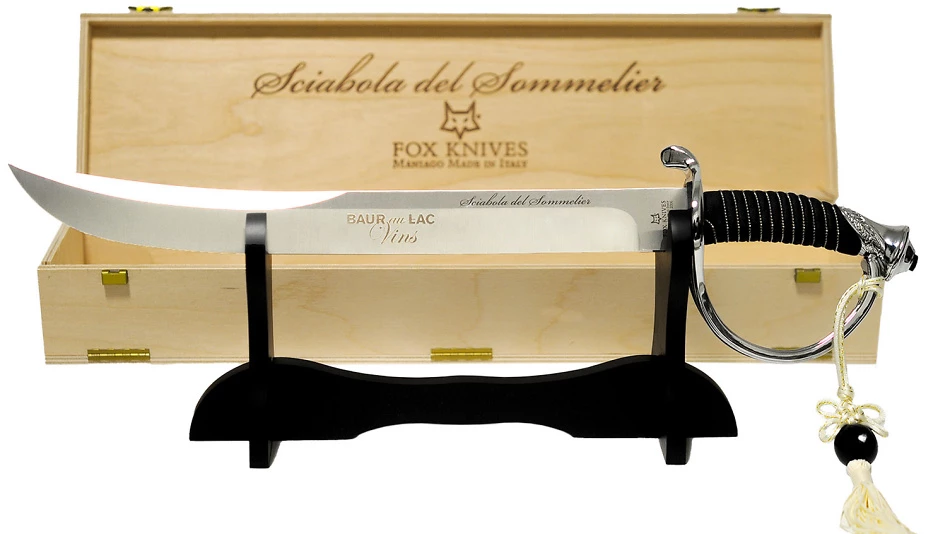Cuvée CXVI Sans Soufre Blanc de Noirs Augustin
AOC Champagne, 750 ml

| Grape variety: | Pinot noir |
| Producer: | Champagne Augustin |
| Origin: | France / Champagne |
Description
A winemaker's champagne full of character and artisan craftsmanship that is enormously powerful, sophisticated and exciting. The sensual and harmonious bouquet reminds of green apples, black and red fruits accompanied by dark spices. The perlage is fine, with a soft mousse and velvety finish. On the palate this dry champagne presents itself with a fan of citrus aromas, a tart, exciting aroma and a soft brioche character. It is smooth, balanced and with brilliant minerality. This champagne can be drunk very well, like white Burgundy, even at slightly higher temperatures. No added sulphur; contains only naturally occurring sulphites.
Celebrate the Art of Sabring!

With its elegant design, this champagne sabre is not only an impressive eye-catcher at any celebration and an indispensable tool for stylish sabering, but also the perfect gift for all passionate sparkling wine lovers.
Attributes
| Origin: | France / Champagne |
| Grape variety: | Pinot noir |
| Label: | Certified organic or biodynamic wine with no declaration on the label |
| Ripening potential: | 1 to 10 years |
| Drinking temperature: | 10 to 12 °C |
| Food Pairing: | Apéro riche, Cakes, biscuits, pastries, Sushi, Sashimi, Ceviche, Oysters, Meat terrine |
| Volume: | 12.0 % |
| Note: | Contains sulphites |
Pinot noir
Blueprint of the terroir
No other variety expresses its terroir as precisely as Pinot noir. It is a sensitive, fragile grape. But when it succeeds, it gives the world some of its very greatest wine plants. It especially excels in Burgundy, where it has been cultivated for at least 700 years. Even in the middle ages, it was considered so precious that it was kept separate from other grapes so as to not diminish its value. The finest examples are delicate and fragrant with aromas of cherries and red berries. With maturity, notes of forest floor, leather and truffles enter as well. An irresistible fruity sweetness still shines through, even after several decades. The Pinot noir does well in cool locations: in Switzerland and in Germany, where it is known as Blauburgunder and Spätburgunder respectively; in Alsace and in South Tyrol, in Oregon, New Zealand and Tasmania. Not least, it yields fantastic champagnes. It is a wonderful culinary companion. With its soft tannins and charming bouquet, it meshes with everything, from Güggeli and cheeses to fried fish.

France
France – Philosophy in a bottle
According to French philosophy, wine should be an expression of the soil and climate. They use the word “terroir” to describe this. Terroir makes every wine different, and many especially good. French wine is regarded worldwide as an expression of cultural perfection. The French believe that humans are responsible for the quality of the berries, the vine variety for their character, and nature for the quantity. This philosophy can be expressed succinctly as: “the truth is the vineyard, not the man.”



